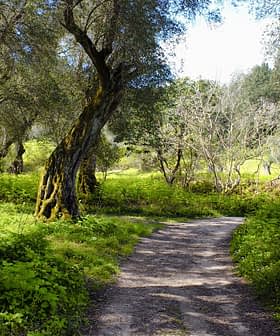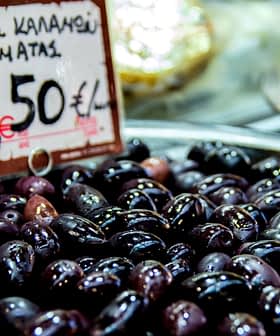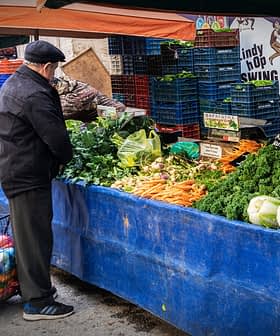Some initial estimates in Greece suggest that several regions will have lower olive oil yields in the 2021/22 crop year compared to the production of 2020/21.
The common thread for the reduced crop is the erratic weather, which has disrupted the typical climatic conditions in specific areas.
The microclimate in our area is changing, with unexpected springtime frosts and summer heat waves that stress out our trees. Adapting to… these obstacles is the only way to go forward.
At a national level, the estimates predict that the total quantity of olive oil is likely to amount to around 215,000 tons, a decrease of more than 15 percent from the 255,000 tons produced in 2020/21.
See Also:2021 Harvest UpdatesIn the traditionally most bountiful olive oil-producing regions, including Crete and southern Peloponnese, a medium to low harvest is predicted for most areas.
In the district of Heraklion in Crete, the largest olive oil-producing region of the island, olive oil production is expected to reach approximately 32,500 tons, according to the local department of agriculture.
The expected quantity of olive oil lags far behind the maximum production capacity of the area, which, in good times, ranges well over 50,000 tons of olive oil.
Some late rains, however, would be a game-changer and increase the volume of the season’s olive oil, members of local agricultural associations told Ypaithros agricultural news portal.
“The production [of olive oil] could reach 40,000 tons if it rains the next few days and we get mild weather afterward, otherwise it will total at around 30,000 tons,” they said.
Meanwhile, on the western side of the island, Chania is expected to perform lower than the previous season, producing around 19,000 tons of olive oil compared with 25,000 tons produced in 2020/21.
In the fire-stricken area of Ilia, in the Peloponnese, production is likely to reach 20,000 tons compared to around 25,000 tons expected before the wildfires broke out in August. Besides the hot and dry summer that wore out the olive trees, the region paid a heavy toll with a total of 375,000 olive trees burned or damaged by the fires.
Messinia, the largest producing region on the peninsula, is likely to reach some 48,000 tons, the estimates suggested, nearing last season’s production of 52,000 tons.
In the neighboring district of Lakonia, the initial projections of last August suggesting a yield of approximately 24,000 tons of olive oil have been revised downwards at around 16,000 tons for the district.
However, the reduced-crop pattern is not ubiquitous, with some producing areas of the district set for substantial olive oil yields.
“It is going to be a great season for us,” the owners of the Cheliotis olive oil mill in the village of Vlachiotis, in southern Lakonia, told Olive Oil Times. “The previous harvesting season was empty.”
“Only 300 tons of olive oil were produced at our mill, but this season we aim for the production of more than 1,000 tons,” they added. “We didn’t have particular problems with the weather and we expect to get olive oil of excellent quality since there was no manifestation of the fruit fly in our area. Several nearby villages, including Skala, Gouves, Asteri and Kato Glykovrysi, also expect strong production.”
The adverse weather has also left its mark in northern Greece, where most olive oil-producing regions are likely to receive half of last season’s production.
In the areas of Alexandroupolis and Kavala, the blossoming of the olive trees was affected by the unforeseen frost of last April, while the situation has been further deteriorated by the recent hail storms that hit the groves in the areas of Evros and Rodopi.
Dimitris Adamidis from the Konos olive oil mill near Alexandroupolis, said that the alternating weather pattern of the area has created great difficulties in their business.
“We produce Protected Designation of Origin olive oil from our olive trees of the Makri variety, and we expect a reduction of almost 50 percent this season,” he told Olive Oil Times.
“The microclimate in our area is changing, with unexpected springtime frosts and summer heatwaves that stress out our trees,” he added. “Adapting to and overcoming these obstacles is the only way to go forward, and we apply special cultivating practices to help our trees cope with the transforming conditions.”
Adamidis also said that, due to the hotter than usual weather in recent years, they had to move the start of the harvest earlier in the season to be able to keep their high standards of production.
Projections for other producing territories of the country, such as Fthiotida and Fokida in central Greece, and the island of Evia, which suffered significant losses in its primary sector during the summer’s destructive wildfires, also indicate a reduced olive oil yield.
The prospects look much better in Lesbos, where olive oil production is expected to increase to 10,000 tons, compared to 3,500 tons previously.
Even more, the sharp impact of the season’s unpropitious circumstances on producers is amplified by the rising costs of several products and commodities, including fuels, energy, and agricultural supplies.
“The price of copper [used in electrical wiring in mills installations and machinery] alone has increased by 20 percent, and the workers are also highly paid,” producer Yiannis Korodinis said.
“If the drought continues and the prospects of the olive oil yield remain poor, many of us will not even be able to harvest,” he added. “Olive oil must get a fair price since the costs are high and we ultimately get no profit from harvesting.”









